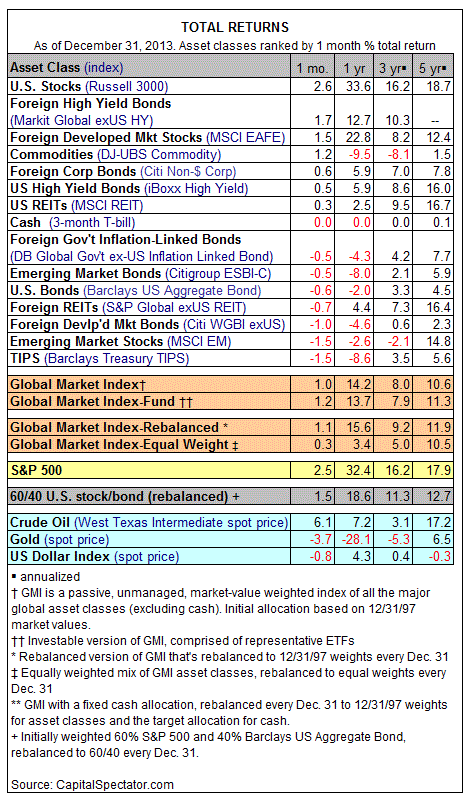● Catching Lightning in a Bottle: How Merrill Lynch Revolutionized the Financial World
By Winthrop H. Smith Jr.
Interview with author via Wealthtrack
Why does a book about the creation, rise and fall of Merrill Lynch matter today? Because the rise of the world’s once largest brokerage firm is emblematic of Wall Street’s great success and critical role in the growth and prosperity of this country and the firm’s failure, of the misguided priorities permeating Wall Street today. In this Wealthtrack interview we talk to Win Smith, author of the just published Catching Lightning in a Bottle: How Merrill Lynch Revolutionized the Financial World. Smith, the former Chairman of Merrill Lynch International resigned from the firm in 2001 because he disagreed with how the firm was being run. This is a fascinating history of Wall Street, two visionary entrepreneurs, their extraordinary achievements and the ultimate destruction of the great firm they created.
● Investing with the Trend: A Rules-based Approach to Money Management
By Gregory L. Morris
Excerpt via publisher, Wiley
Modern financial theory wants you to believe that the markets do not trend, are efficient, and therefore cannot be exploited for profit. They state that it is random and is normally distributed except for some very long-term periods that last many decades. What they ignore is that the market is made up of people, frail humans who act and invest like humans. Humans can be rational and they can be irrational, rarely knowing which is present and when. Being rational at times and being irrational at times is normal. This is not random behavior and is quite predictable. Hopefully this book demonstrates those failings and offers a solution.
● Strategic Value Investing: Practical Techniques of Leading Value Investors
By Stephen Horan, et al.
Summary via publisher, McGraw Hill
Benjamin Graham referred to it as his “margin of safety.” Seth Klarman favors it over all other investment methods. Warren Buffett uses it to make millions for his investors. It’s called value investing, and you can make it work wonders for your portfolio. All you need is money to invest, a little patience—and this book. Strategic Value Investing reveals everything you need to know to build a world-class portfolio using value investing as your north star. Written by experts on valuation and financial analysis, this comprehensive guide breaks it all down into an easy-to-implement process.
● Tail Risk Hedging: Creating Robust Portfolios for Volatile Markets
By Vineer Bhansali
Summary via publisher, McGraw-Hill
One of investors’ greatest concerns since the global financial crisis are the unpredictable, worst-case-scenario events that occur on tail of the bell curves they analyze; this guide provides actionable steps investors can take to hedge their portfolios against these tail risks. Bhansali provides a rare, inside look at the way PIMCO approaches tail risk hedging–providing the first clear, concise, and focused approach to the technique. Coauthor of Fixed Income Finance, Bhansali is the executive vice president, portfolio manager, and firm-wide head of analytics for portfolio management at PIMCO
● Risk: A Study of Its Origins, History and Politics
By Matthias Beck and Beth Kewell
Summary via publisher, World Scientific
Over a period of several centuries, the academic study of risk has evolved as a distinct body of thought, which continues to influence conceptual developments in fields such as economics, management, politics and sociology. However, few scholarly works have given a chronological account of cultural and intellectual trends relating to the understanding and analysis of risks. Risk: A Study of its Origins, History and Politics aims to fill this gap by providing a detailed study of key turning points in the evolution of society’s understanding of risk. Using a wide range of primary and secondary materials, Matthias Beck and Beth Kewell map the political origins and moral reach of some of the most influential ideas associated with risk and uncertainty at specific periods of time. The historical focus of the book makes it an excellent introduction for readers who wish to go beyond specific risk management techniques and their theoretical underpinnings, to gain an understanding of the history and politics of risk.
● Aid on the Edge of Chaos: Rethinking International Cooperation in a Complex World
By Ben Ramalingam
Summary via publisher, Oxford University Press
It is widely recognised that the foreign aid system – which today involves every country in the world – is in need of drastic change. But there are conflicting opinions as to what is needed. Some call for dramatic increases in resources, to meet long-overdue commitments, and to scale up what is already being done around the world. Others point to the flaws in aid, and bang the drum for cutting it altogether – and argue that the fate of poor and vulnerable people be best placed in the hands of markets and the private sector. Meanwhile, growing numbers are suggesting that what is most needed is the creative, innovative transformation of how aid works. Aid on the Edge of Chaos is firmly in the third of these camps.











